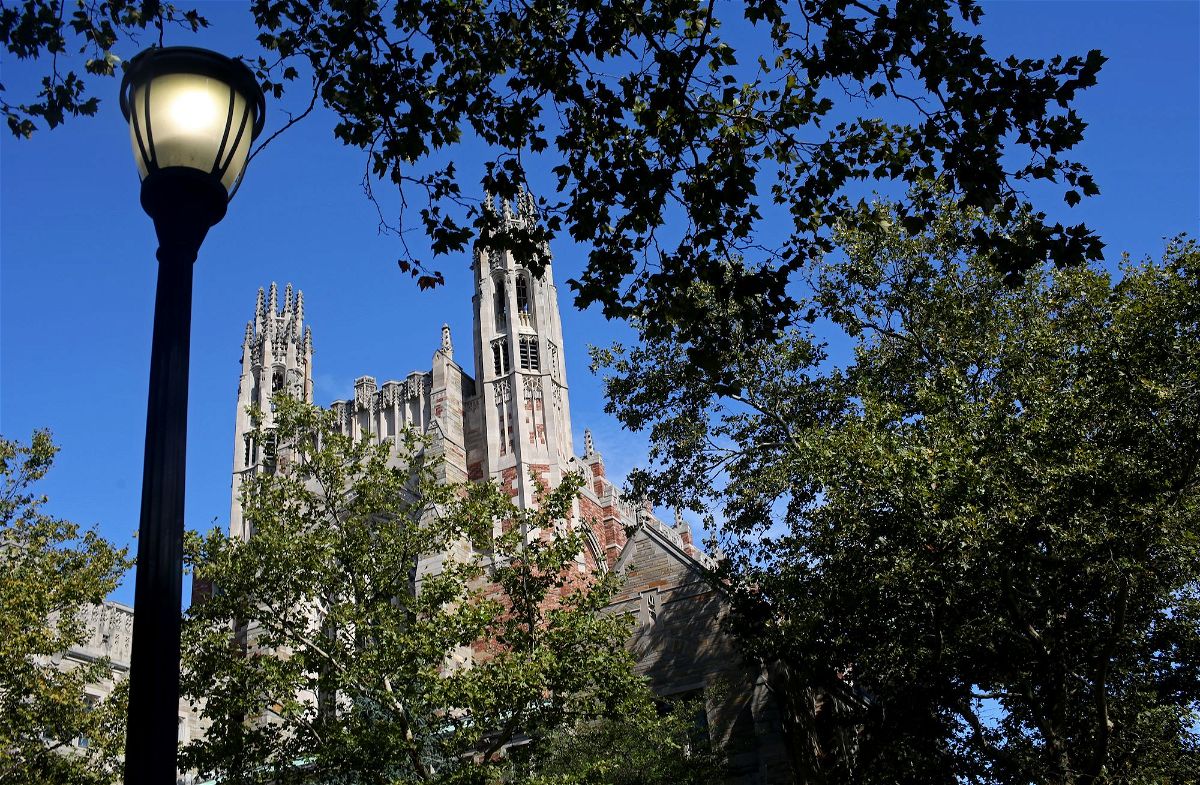Some New England universities and colleges break $90,000 barrier for total cost in upcoming school year

Outside of the Yale University Law School is pictured on September 27
By Zenebou Sylla, CNN
(CNN) — Several New England universities and colleges have reached a pinnacle of at least $90,000 for undergraduate tuition and costs starting this fall.
Yale University, Tufts University, Boston University (BU), and Wellesley College are among a few private institutions that will top this year’s costs for tuition, housing and other expenses, according to the schools’ websites.
The nearly six-figure sums reflect the rising cost of higher education, far outstripping the average inflation for other goods and services.
For the 2024-2025 school year, Tufts’ estimates of expenses for undergraduate programs reaches nearly $96,000, trumping Wellesley — which comes in at about $92,000.
Wellesley’s comprehensive undergraduate fee is an increase of 4.7% from the current year of $88,200, which “reflects the increasing costs of providing a Wellesley education,” university spokesperson Stacey Schmeidel told CNN Wednesday. The total fees including health insurance will boost the cost up to $92,060, Schmeidel added.
In contrast, the Consumer Price Index — a widely used measure of inflation — rose 3.2% in the 12 months ended in February.
Schmeidel said very few Wellesley students pay the total fee, adding nearly 60% of its students receive financial aid and the average financial aid award is $67,469.
“We are committed to making a Wellesley education affordable, and we meet the full calculated financial need for every student who enrolls at the College,” Schmeidel said.
Colleges both public and private have seen jumps in tuition and other costs in recent years.
Between 1987 and 2017, the cost of attending a public four-year college rose more than 200%. While data on student debt varies, the average balance for a borrower between the ages of 25 and 34 stands at $32,000, according to Department of Education data.
A Bureau of Labor Statistics calculator shows $100 in January 1987 being worth about an inflation-adjusted $222 at the end of 2017 — or an increase of about 122%.
For the year strting this fall, Yale University comes in at almost $91,000, preceding Boston University with around $90,000 for the academic year.
BU, with one of its primary campuses in Boston, says it is offering expanded financial aid packages that will make up the difference between the cost of attendance and affordability, according to its website.
The university will also “meet 100% of the demonstrated financial need for admitted, first-year students who are US citizens or permanent residents.”
BU also said it is awarding $425 million in financial aid to its undergraduate students this upcoming year, 92% of the aid the university gives is need-based, and each award is guaranteed for four years with BU Scholarship Assurance, according to Colin Riley, executive director of media relations for the university.
The remaining 8% is merit-based, according to the school’s website.
Riley added 56% of domestic students received some form of aid for this academic year, with the average financial aid package being $67,000, for an average cost of attendance of $16,000.
“Because this is an average, some of the students with greatest demonstrated financial need paid $0, and others paid more,” Riley said.
Jeremiah Quinlan, dean of undergraduate admissions and financial aid for Yale, reported the undergraduate financial aid budget for the 2023-24 academic year was $241 million — a figure that has more than tripled since the 2007-08 academic year, according to a release on Yale’s website.
“I am proud that Yale is one of only a small handful of institutions that meet 100% of all families’ demonstrated financial need without requiring students or parents to take out loans, with consistent policies for all students regardless of citizenship or immigration status,” said Quinlan.
Patrick Collins, Tufts University’s executive director of media relations, said the current first year class received more than $33 million in need-based grants from Tufts as the university’s average grant this year was more than $53,500. Collins added the increase in total student charges for 2024-25 is “in line with increases that we are seeing at our peer institutions.”
“We are proud to be one of a small number of universities committed to meeting the full demonstrated financial need of all admitted undergraduate students,” Collins said in a statement to CNN Wednesday. “Because of this commitment, a significant number of students pay substantially less in tuition than the published price.”
Contributing: CNN’s Allison Morrow.
The-CNN-Wire
™ & © 2024 Cable News Network, Inc., a Warner Bros. Discovery Company. All rights reserved.

